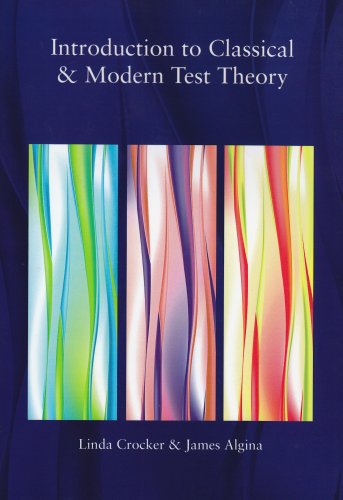Introduction to Classical and Modern Test Theory ebook
Par davis virginia le jeudi, février 23 2017, 22:07 - Lien permanent
Introduction to Classical and Modern Test Theory. Linda Crocker, James Algina

Introduction.to.Classical.and.Modern.Test.Theory.pdf
ISBN: 0495395919,9780495395911 | 527 pages | 14 Mb

Introduction to Classical and Modern Test Theory Linda Crocker, James Algina
Publisher: Wadsworth Pub Co
Kline, A Handbook of Test Construction: Introduction to psychometric design (London: Methuen, 1986) p. Introduction to classical and modern test theory. Statistical methods for meta-analysis. Introduction to Classical and Modern Test Theory by James Algina – Simply A Great Book. Theory of generalizability: A liberalization of reliability theory. New York: Holt, Rinehart and Winston. Young children's understandings of cigarette smoking. Belmont, CA: Wadsworth/Thomson Learning. Statistics in geography (2nd ed.). �Understanding and validity in qualitative research,” Harvard Educational Review, 62(3): 279-299. Toronto: Holt, RineHart, and Winston, Inc. Orlando, FL: Harcourt Brace Jovanovich. New York: Harcourt Brace Jovanovich. The 1991 revision of the Wechsler Intelligence Scale for Children (WISC-III) resulted in the addition of an optional subtest - Symbol Search. New York: Holt Rinehart & Winston. Organizational Research Methods, 4, 361-375. Algina, Introduction to Classical and Modern Test Theory (New York, NY: Holt, 1986) p. Single item reliability: A replication and extension. The concept of parallel tests is also commonly invoked as part of classical measurement theory. In this context, a true score represents “the average score a person would obtain on an infinite number of parallel forms of a test, assuming that the person is not affected by taking the tests (i.e., assuming no practice or ..